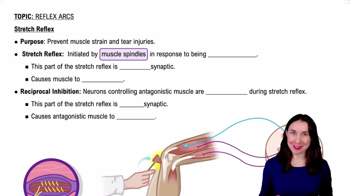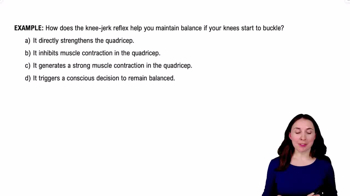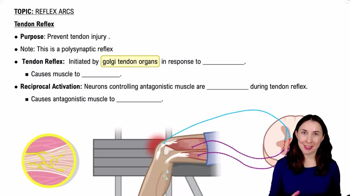Reflex Arcs definitions Flashcards
 Back
BackReflex Arcs definitions
1/15
Terms in this set (15)
- Stretch ReflexA monosynaptic reflex initiated by muscle spindles in response to unexpected stretching, causing muscle contraction.
- Muscle SpindlesSensory receptors within muscles that detect changes in muscle length and trigger the stretch reflex.
- Reciprocal InhibitionA polysynaptic process that relaxes the antagonistic muscle during a stretch reflex to ensure smooth movement.
- Tendon ReflexA polysynaptic reflex triggered by Golgi tendon organs in response to excessive tension, leading to muscle relaxation.
- Golgi Tendon OrgansSensory receptors located in tendons that detect tension and initiate the tendon reflex.
- Reciprocal ActivationA process where the antagonistic muscle contracts during the tendon reflex to maintain balance and prevent overextension.
- Flexor ReflexAn ipsilateral reflex causing rapid contraction of flexor muscles in response to a painful stimulus, leading to withdrawal.
- Crossed Extensor ReflexA contralateral reflex that extends the opposite limb to maintain balance during a flexor reflex.
- IpsilateralReferring to reflex actions occurring on the same side of the body as the stimulus.
- ContralateralReferring to reflex actions occurring on the opposite side of the body as the stimulus.
- MonosynapticA reflex arc involving a single synapse between a sensory and a motor neuron.
- PolysynapticA reflex arc involving multiple synapses, typically including interneurons.
- Antagonistic MuscleA muscle that opposes the action of another muscle, often relaxed during reflex actions.
- InterneuronA neuron that transmits impulses between other neurons, especially in reflex arcs.
- Sensory NeuronA neuron that transmits sensory information from receptors to the central nervous system.



